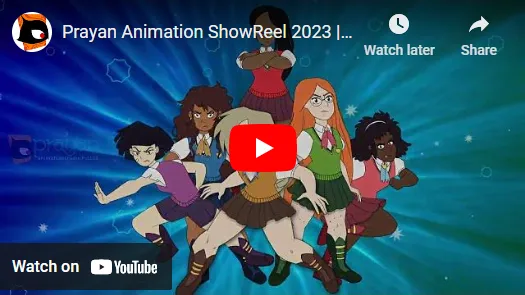The Business of Animation: Funding, Budgeting, and Distribution Strategies

Animation is more than simply a creative pursuit; it’s a booming industry that needs funding, distribution tactics, and careful planning to bring compelling stories to life. A solid business plan with financing, budget distribution, and allocation strategies is the backbone of any successful animated project. What makes the animation industry tick? Let’s find out.
Obtaining Financial Backing for Animation Projects
Many different options exist for raising funds for an animation production, such as:
Investors and Studio Support: Many projects receive funding from major animation studios. Individual and institutional investors both are tempted by the promise of high returns and play a pivotal role in financing animation projects.
Platforms for Crowdfunding: Websites such as Indiegogo and Kickstarter allow artists to raise money for their projects through the general public. In addition to obtaining financial support, this strategy also determines the level of interest from the audience.
Government grants, nonprofits, and sponsorships all provide funding for initiatives that are in line with their goals or that promote particular ideals.
Allocating Funds Efficiently in Animation
The long-term viability and success of an animation project depend on careful financial planning. Important areas where funds are distributed are:
Pre-Production Costs: This phase involves concept development, scriptwriting, storyboarding, character design, and animatics creation.
Production Expenses: These cover the actual creation of animation, including animation software, hardware, studio space, and salaries for artists, voice actors, and technicians.
Post-Production and Marketing: Expenses for editing, sound design, music composition, marketing campaigns, and distribution efforts are crucial for the project’s success.
Distribution Strategies for Animation Content
Some animated films start out in theaters to attract a larger audience and make money at the box office; this is one distribution strategy for animation content.
The proliferation of online video streaming services has made previously inaccessible animated features available to a worldwide audience through sites like Amazon Prime, Disney+, Hulu, and Netflix.
Animated TV shows and specials can still be shown on traditional TV networks and cable channels.
Physical media such as DVDs and Blu-rays, as well as digital downloads, continue to be lucrative avenues for content producers, particularly those with well-established franchises.
Obstacles and Promising Developments
Keeping up with the latest technological developments, staying ahead of the competition, and sticking to strict budgets are all obstacles in the animation industry. Possible developments in the near future include more immersive narrative experiences, virtual production methods, and more usage of artificial intelligence and machine learning in animation.
Just as important as the artistic side of animation is the commercial side. Acquiring capital, controlling spending, and executing efficient distribution plans are critical to a successful outcome. The animation industry has been able to adapt to changing technology and consumer tastes by utilizing a variety of funding sources, effectively managing expenditures, and strategically distributing work across multiple channels. If they want to succeed as a company and present fantastical worlds to audiences throughout the world, creators must have a firm grasp of the financial realities.
FAQ
Common ways to secure funding for animation projects include:
1. Investors and Studio Support: Backing from major studios or individual investors.
2. Crowdfunding Platforms: Websites like Kickstarter and Indiegogo.
3. Government Grants, Nonprofits, and Sponsorships: Support aligned with specific goals or ideals.
Efficient fund allocation ensures the long-term success of animation projects by distributing resources to key areas like pre-production (scriptwriting, storyboarding), production (animation, salaries, equipment), and post-production/marketing (editing, sound, promotion).
Distribution strategies include:
1. Theatrical Releases: For larger audience reach and box office revenue.
2. Streaming Platforms: Offering global access via Netflix, Disney+, etc.
TV Networks: Traditional cable or TV airing.
3. Physical and Digital Media: Selling DVDs, Blu-rays, or digital downloads
The animation industry faces challenges such as:
1. Keeping up with technological advancements.
2. Managing competition.
3. Staying within strict budgets.
Promising trends include immersive storytelling, virtual production techniques, and the increasing use of artificial intelligence and machine learning in animation workflows.
Understanding the balance between creativity and business is essential for a successful animation project.














 We can help you.
We can help you. 




